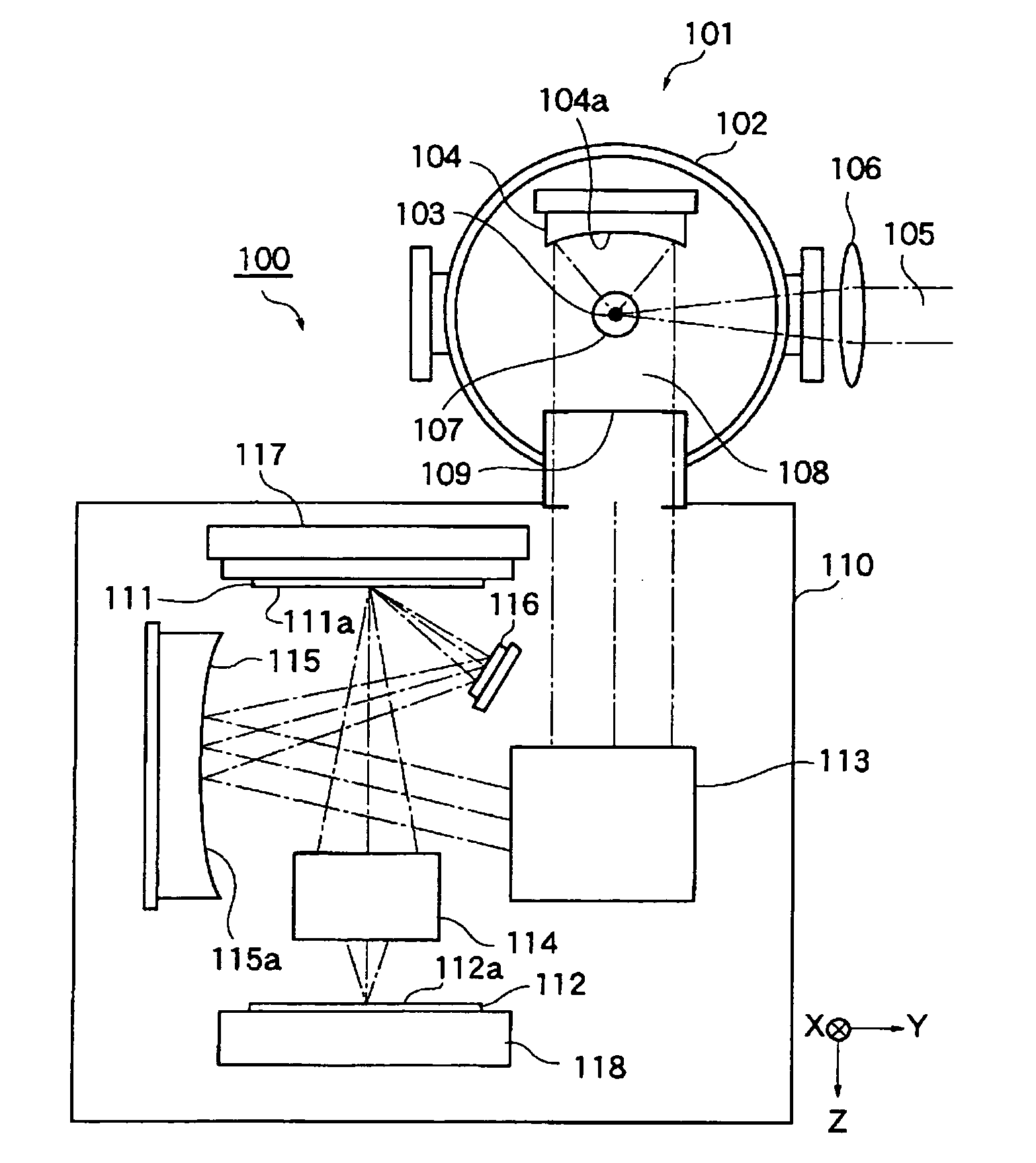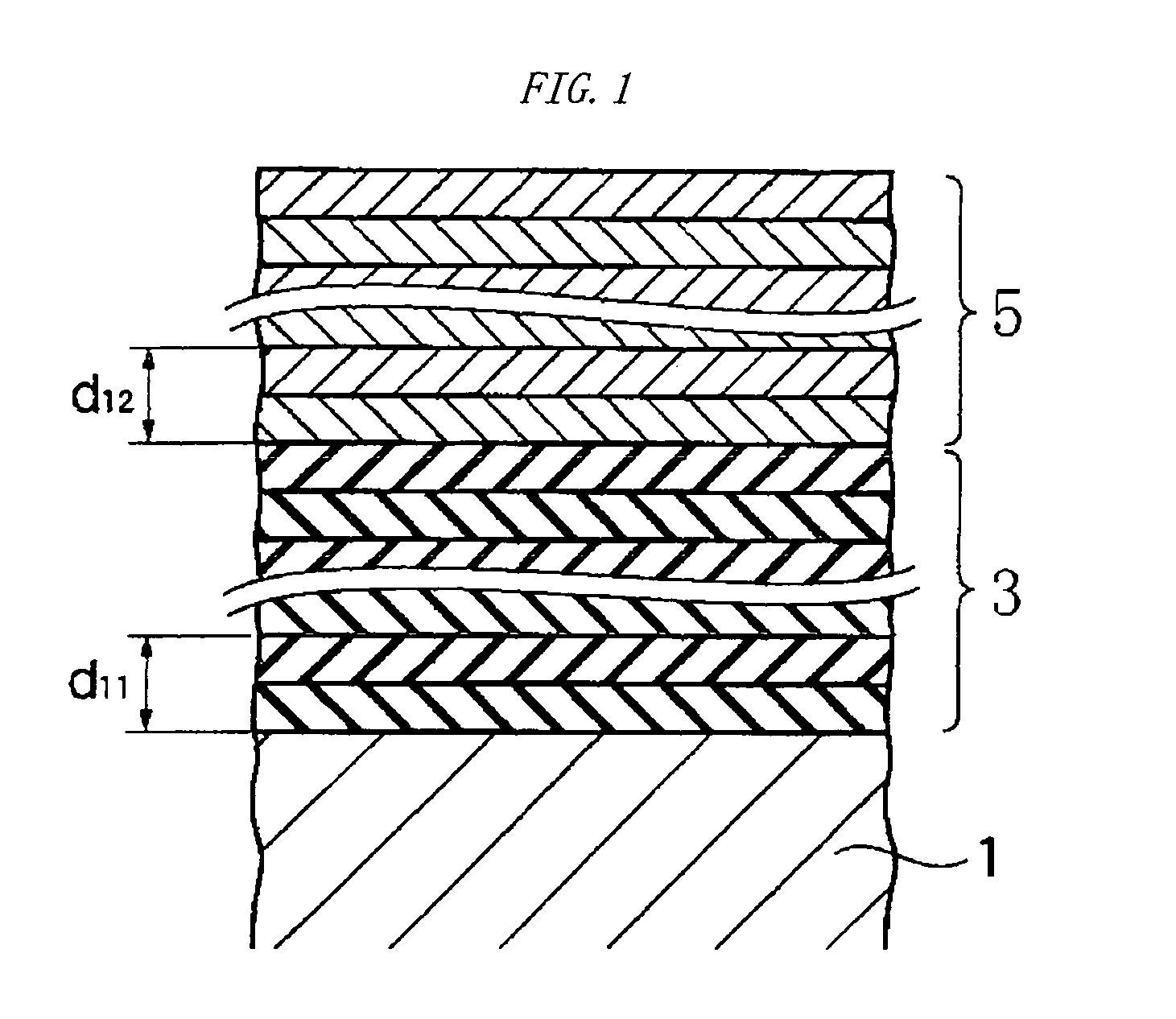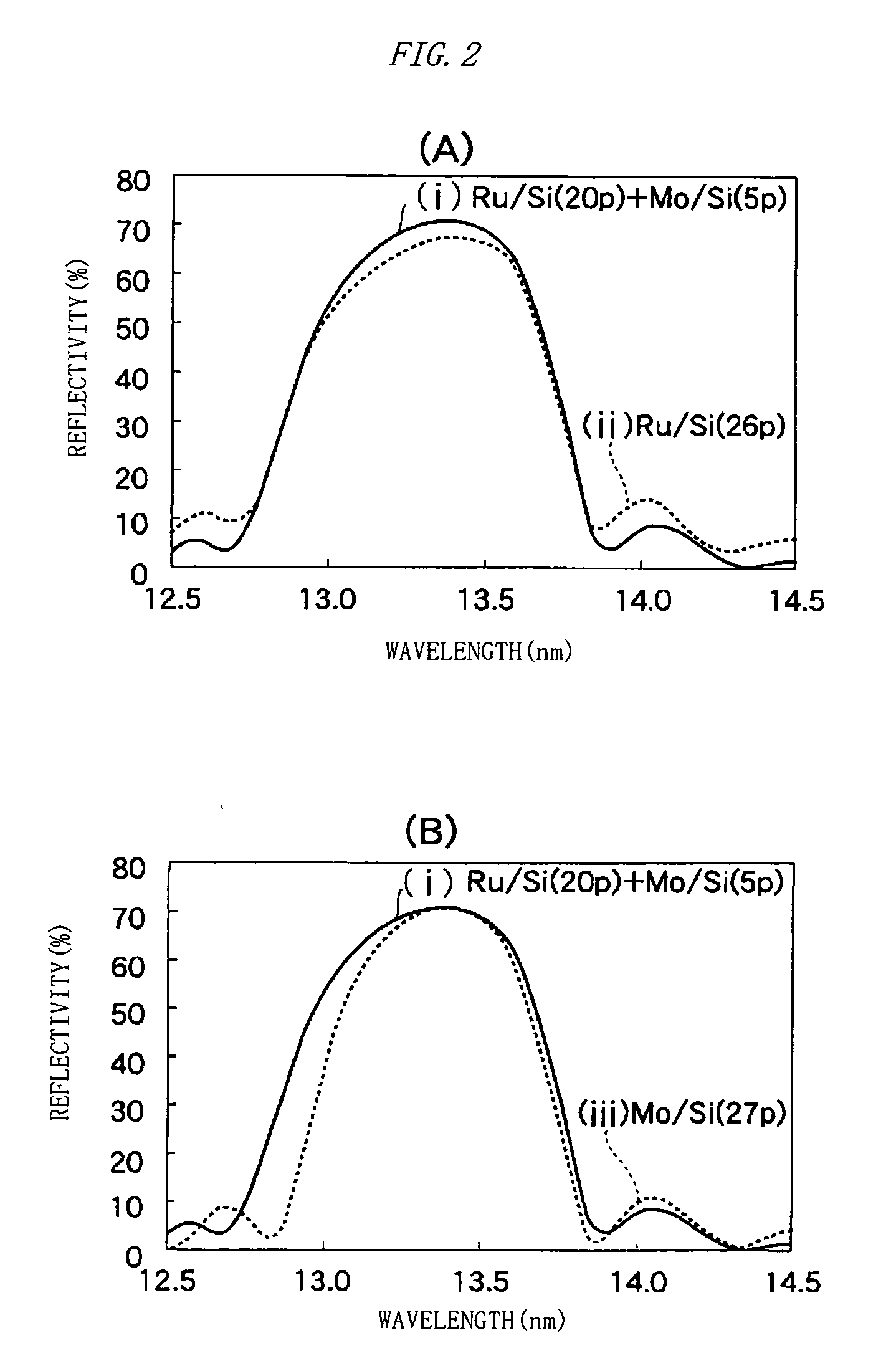Multilayer mirror, method for manufacturing the same, and exposure equipment
a multi-layer mirror and manufacturing method technology, applied in the field of multi-layer mirrors, can solve the problem of restricted number of apertures (na) in the optical system, and achieve the effect of reducing the incidence angle dependence of reflectivity
- Summary
- Abstract
- Description
- Claims
- Application Information
AI Technical Summary
Benefits of technology
Problems solved by technology
Method used
Image
Examples
embodiment 1
[0107]FIG. 1 is a sectional schematic diagram of a multilayer mirror according to a first embodiment of the present invention. A substrate 1 is made of low thermal expansion glass polished until the roughness of the surface (the upper surface in the drawing) is 0.2 nm RMS or less. On the surface of the substrate 1, 20 pair layers of Ru / Si multilayer 3 are formed and on the Ru / Si multilayer 3, five pair layers of Mo / Si multilayer 5 are formed. The periodic length (the thickness of unit periodic structure (layer pair) of Ru / Si, denoted by d11 in the drawing) of the Ru / Si multilayer 3 is 6.86 nm and the periodic length (the thickness of the layer pair of Mo / Si, denoted by d12 in the drawing) of the Mo / Si multilayer 5 is 6.9 nm. The value of these multilayers is 0.4 in each unit periodic structure. Note that, the value is a ratio (=dRu / d, or =dMo / d) of the thickness (dRu, or dMo) of the Ru layer or Mo layer to the periodic length (d) of the multilayer.
[0108] Here, a method for manufa...
embodiment 2
[0113]FIG. 4 is a sectional schematic diagram of a multilayer mirror according to a second embodiment of the present invention. A substrate 10 is made of low thermal expansion glass polished until the roughness of the surface (the upper surface in the drawing) is 0.2 nm RMS or less. On the surface of the substrate 10, four pair layers of Mo / Si multilayer (deep layer film group) 11 are formed. The periodic length of the Mo / Si multilayer 11 (the thickness of the pair layer of Mo / Si) is 6.9 nm and the value is 0.5.
[0114] On the surface of the Mo / Si multilayer 11, an additional layer 12 (in the present embodiment, a silicon layer) is formed. The thickness of the additional layer 12 is adjusted so as to have an optical thickness of about one-fourth of the wavelength of incidence light. In the present embodiment, the thickness of the additional layer 12 is about 3.5 nm. Further, on the surface of the additional layer 12, 20 pair layers of Mo / Si multilayer (surface layer film group) 13 h...
embodiment 3
[0120]FIG. 6 is a sectional schematic diagram of a multilayer mirror according to a third embodiment of the present invention. A substrate 20 is made of low thermal expansion glass polished until the roughness of the surface (the upper surface in the drawing) is 0.2 nm RMS or less. On the surface of the substrate 20, five pair layers of Ru / Si multilayer (deep layer film group) 21 are formed. The periodic length of the Ru / Si multilayer 21 (the thickness of the pair layer of Ru / Si) is 6.9 nm and the value is 0.5.
[0121] On the surface of the Ru / Si multilayer 21, an additional layer 22 (in the present embodiment, a silicon layer) is formed. The thickness of the additional layer 22 is adjusted so as to have an optical thickness of about one-fourth of the wavelength of incidence light. In the present embodiment, the thickness of the additional layer 22 is about 3.85 nm.
[0122] Further, on the surface of the additional layer 22, 20 pair layers of Ru / Si multilayer (surface layer film grou...
PUM
| Property | Measurement | Unit |
|---|---|---|
| reflectivity | aaaaa | aaaaa |
| reflectivity | aaaaa | aaaaa |
| incidence angle | aaaaa | aaaaa |
Abstract
Description
Claims
Application Information
 Login to View More
Login to View More - R&D
- Intellectual Property
- Life Sciences
- Materials
- Tech Scout
- Unparalleled Data Quality
- Higher Quality Content
- 60% Fewer Hallucinations
Browse by: Latest US Patents, China's latest patents, Technical Efficacy Thesaurus, Application Domain, Technology Topic, Popular Technical Reports.
© 2025 PatSnap. All rights reserved.Legal|Privacy policy|Modern Slavery Act Transparency Statement|Sitemap|About US| Contact US: help@patsnap.com



